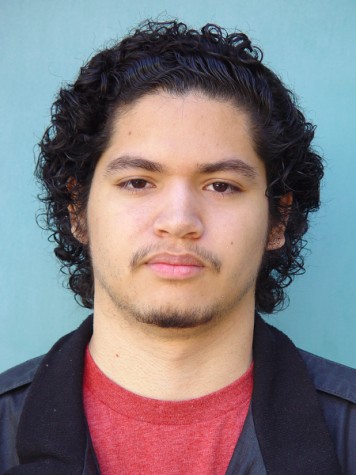Famed physicist Dr. Kip S. Thorne, the Feynman Professor of Theoretical Physics of Caltech, is famous for his quest to probe the warped side of the universe with gravitational waves.
Thorne gave a lecture on campus April 28 to discuss his theories.
Poghos Kazarian, professor of general physics on campus, said he’s known Thorne for nearly a decade and that Thorne has had a significant influence on him as a professional.
“Thorne is not only a great physicist but also a very decent person,” Kazarian said. “He is always supportive of young scientists.”
Thorne’s research is focused on Einstein’s general theory of relativity with an emphasis on relativistic stars, black holes and gravitational waves. He is cofounder of the Laser Interferometer Gravitational Wave Observatory (LIGO) Project, and as a current member of this association, he is trying to test Einstein’s theory of relativity.
LIGO, which is operated by MIT and Caltech, is a facility dedicated to the detection of cosmic gravitational waves and the measurement of these waves for scientific research. It consists of widely separated installations in Louisiana and Washington, and collaborates with similar projects around the world including the European Union and Japan which together form a global network of gravitational wave observatories.
The results are available for use by the world scientific community.
“Thorne is leading one of the largest research groups for theoretical physics in the U.S. and the world,” Kazarian said.
Kazarian said that with multiple stations around the world, it is hard for them all to be wrong at the same time.
With the help of LIGO, Thorne is trying to confirm Einstein’s prediction of gravitational waves. He is also a member of the Laser Interferometer Space Antenna (LISA) International Science Team.
The primary objective of LISA is to search for gravitational waves, but also serves in studying black holes, testing Einstein’s theory of relativity and probing the early universe.
LISA is the first dedicated space-based gravitational wave observatory. So far the only space searches for gravitational waves have been made using measurements of radio signals, not ideal for gravitational wave searches from spacecraft on their way to other planets.
LISA may provide answers to the following questions: how did the universe begin? Does space have edges? Does time have a beginning and an end?
One difference between LIGO and LISA (besides the fact that one is ground-based and the other is space-based) is that LIGO uses higher frequencies that LISA.
Kazarian states that finding gravitational waves is important because it helps us to “see the universe in a new light.” In addition, gravitational waves cannot be blocked and thus may be considered the “ultimate X-ray” of our universe. This can help solve many mysteries that surround our universe today.
Aside from being an expert in his field, Thorne, in collaboration with Steven Spielberg and Jonathan Nolan (writer for “The Dark Knight”), have announced that they will be working on a movie called “Interstellar” which is an exploration of Thorne’s theories of gravity fields, wormholes and several hypothesis that Albert Einstein was never able to prove. The movie is scheduled for release in 2011.
Thorne was a student of John Archibald Wheeler (1911-2008), who was an eminent American theoretical physicist. One of the later collaborators of Albert Einstein, he tried to achieve Einstein’s vision of a unified field theory. He is also known for having coined the terms “black hole” and “wormhole” and the phrase “it from bit.”
Thorne was elected to the American Academy of Arts and Sciences in 1972, the National Academy of Sciences in 1973, the Russian Academy of Sciences and the American Philosophical Society in 1999.
He has been awarded the Lilienfeld Prize of the American Physical Society, the Karl Schwarzschild Medal of the German Astronomical Society and the Commonwealth Award for Science, and was named California Scientist of the year in 2004.
Thorne has also written many books, including “Black Holes and Time Warps: Einstein’s Outrageous Legacy” (Norton Publishers, 1994), with a foreword by Steven Hawking.
“His books are for people who already know calculus at the very least,” Kazarian said. “But his popular books are accessible to anyone with the right mindset.”
Thorne was awarded the American Institute of Physics Science Writing Award, the Phi Beta Kappa Science Writing Award, and the Russian Priroda Reader’s Choice Award. In 1973, Thorne co-authored the textbook “Gravitation,” along with Wheeler and Charles Misner from which most of the present generation of scientists has learned general relativity theory.
Approximately 50 physicists have received a doctorate at Caltech under Thorne’s personal mentorship.
The science lecture series is coordinated by Dr. Sid Kolpas. The next lecture will be held on May 26 featuring guest speaker Franco Reyna, in “Diabetes: The Silent Killer.” It will be free and open to the public.
“Let’s hope that Thorne will be back with more insights and information,” Kazarian said.
For more information about the GCC science lecture series, call (818)-240-1000.

